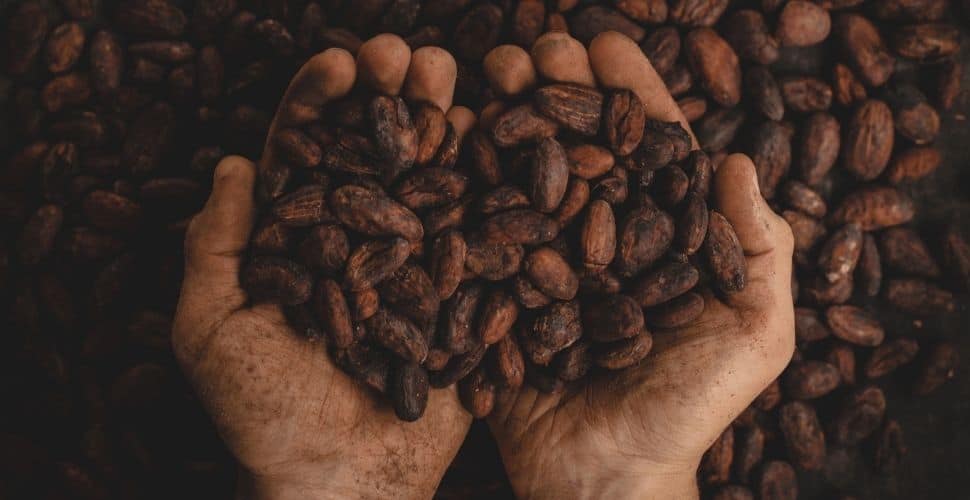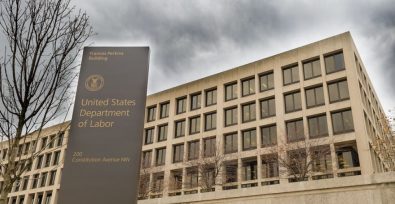At the time of writing, almost 180,000 people within the Freedom United community are calling for change from major chocolate companies. Those changes include a call for an end to deforestation and a rapid reduction of pesticide usage. So why is an anti-modern slavery community pushing for improved environmental protection policies in the cocoa sector?
Drivers of the climate crisis and hazardous child labor are mutually reinforcing
Pesticides endanger children
The cocoa sector has become more dependent on pesticides in recent decades as a means of increasing yields. As a result, people working on cocoa farms, including children and pregnant women, are facing more harmful exposure to dangerous pesticides that burn their skin and affect their breathing.
When children working in the cocoa sector are exposed to chemicals, it pushes them into the category of ‘hazardous child labor,’ which is considered one of the ‘worst forms of child labor’ by the International Labor Organization.
Moreover, when agrichemical management is poor, the wider community also suffers. Water sources become poisoned and soil health deteriorates. Efforts to reduce pesticide usage in the cocoa supply chain can therefore improve the health and wellbeing of children in farming communities, whether they work on the farm or merely live nearby.
Along with many other organizations, the Freedom United community campaigns for a complete elimination of the most hazardous pesticides and a rapid reduction in the total amount of agrichemicals used to produce cocoa. To ensure farmers do not bear the brunt of this shift, chocolate companies should support them to increase their yield through non-chemical interventions while also pursuing policies that maximize farmer income.
Deforestation drives child labor
In the last 60 years, Côte d’Ivoire and Ghana, the world’s two leading cocoa producers, have lost around 94% and 80% of their forests, respectively. Around a third of that loss is estimated to be linked to the cocoa sector.
Wiping out native forests has catastrophic consequences for the planet as a whole, as we destroy the earth’s capacity for carbon removal. But it also has a very immediate impact on the rates of child labor and hazardous child labor in the cocoa sector.
Anti-slavery scholar Michael E Odijie explores the cocoa farming conditions that create demand for cheaper labor sources. He explains in an article for The Conversation:
“Cocoa farming once involved the consecutive phases of boom and bust, followed by a shift to a new forest area (production shift), a different product in the same area (diversification) or a different system of cocoa cultivation requiring extra production factors […] However, accessing new forestland is becoming ever more difficult, and far more labour is needed to replant cocoa than to plant on pioneer forest soil.”
To be able to continue making a living from the cultivation of cocoa, farmers turn to children for labor. In extreme cases, some also use children who have been trafficked from neighboring countries.
Companies that use up to 85% of the world’s cocoa, along with the governments of Ghana and Côte d’Ivoire have pledged to collaborate to end cocoa-driven deforestation through the Cocoa & Forests Initiative. Moreover, this year’s Chocolate Scorecard revealed that most companies have a deforestation monitoring system in place.
However, social and environmental accounting researcher Dr Stephanie Perkiss, who was involved in grading companies for the scorecard, highlights that many of the current systems are inadequate. She writes:
“It would be great to see more companies purchasing cocoa from locations that are verified deforestation-free, using a satellite monitoring system. Even better, if companies started using the available technology that forecasts (quite accurately) where deforestation will happen, this could stop deforestation in their cocoa supply chains before it takes place.”
Environmental destruction and hazardous child labor share underlying causes and solutions
Poverty at the roots
Farmer poverty is at the root of both environmental degradation and child exploitation in cocoa. On average, cocoa farmers earn less than US$1.20 per day, with women farmers earning just 50 cents per day. Both amounts are less than half the living wage.
To make ends meet, farmers turn to practices that are harmful to the environment to increase their yields and seek cheaper labor sources, including children. For this reason, solutions that address farmer poverty will be beneficial for both people and the planet.
The reasons behind farmer poverty are multiple and complex. Many farmers grow cocoa on small farms where productivity is too low to make a living wage at the current low price of cocoa once costs are balanced out.
On one end of the chocolate value chain are some of the world’s richest companies. On the other end, cocoa farmers are earning only around 6% of the retail price of a standard bar of chocolate.
Carolyn Kitto, Co-Director of Be Slavery Free, explains that addressing farmer poverty in cocoa is no easy feat. In an article explaining the living wage grading for the Chocolate Scorecard, she points out that companies must start by finding out the salaries of the farmers in their supply chains. Currently, only five of the companies surveyed have this information. The second step would be to work out a living income reference price for farmers.
Once this information is ascertained, companies should work directly with farmers to help increase their income. A number of interventions are currently being tested in the industry, including awarding premiums, increasing yields through improving farming methods, and supporting farmers to diversify their income.
However, as Kitto highlights, monitoring and evaluation of such interventions is often limited to the output level, such as how many farmers received training. The overall impact of programs on farmers’ income is under-researched, meaning the industry is missing valuable learning opportunities and potentially failing to maximize the impact of investments in this area.
How can you fix what you can’t trace?
Another factor that allows exploitation and environmental destruction to go unchecked in the industry is the fact that chocolate companies generally do not trace their full cocoa supply chains.
If chocolate companies don’t know where the cocoa in their products is coming from, then they can’t know how sustainable and ethically sound their supply chain is or take steps to address any issues.
Although companies have taken major strides in recent years, the industry is far from achieving full first-mile traceability, with around half of the cocoa from the companies evaluated in the 2022 Chocolate Scorecard coming from ‘indirect’ supplies.
Some companies rely on certification bodies, like Rainforest Alliance and Fairtrade, to ensure their cocoa is traceable. However, certification does not guarantee full traceability as certification schemes often follow a method known as ‘mass balance’ whereby certified and non-certified cocoa are mixed along the supply chain.
John Dumay, a Professor of Accounting and Finance on the research team for the 2022 Chocolate Scorecard, writes:
“We see that much of the chocolate industry is focused on getting ever better visibility on the best (direct) part of their supply chain, whilst neglecting the most preoccupying and likely most abuse-prone part of their supply chain (indirect).”
He advocates for companies to drastically reduce the amount of cocoa they source from indirect supply chains and to take steps to ensure the additional costs associated with greater traceability are not borne by farmers.
Join the movement to address the environmental and social harms of the chocolate industry
If we are to build a world in which modern slavery no longer thrives, our movement cannot exist in a vacuum. Engaging with the systems and circumstances that exacerbate exploitation is essential. When we advocate for an end to child exploitation in cocoa, the climate crisis is a context we cannot ignore.
The movement to transform the chocolate industry needs consumers like you to tell companies that you want to see action on issues like child labor, living wage, agrichemical management, and traceability. Sign the petition today.
Want to make more informed decisions about which chocolate you buy? You can learn more about how companies are performing when it comes to social and environmental practices in the 2022 Chocolate Scorecard.




